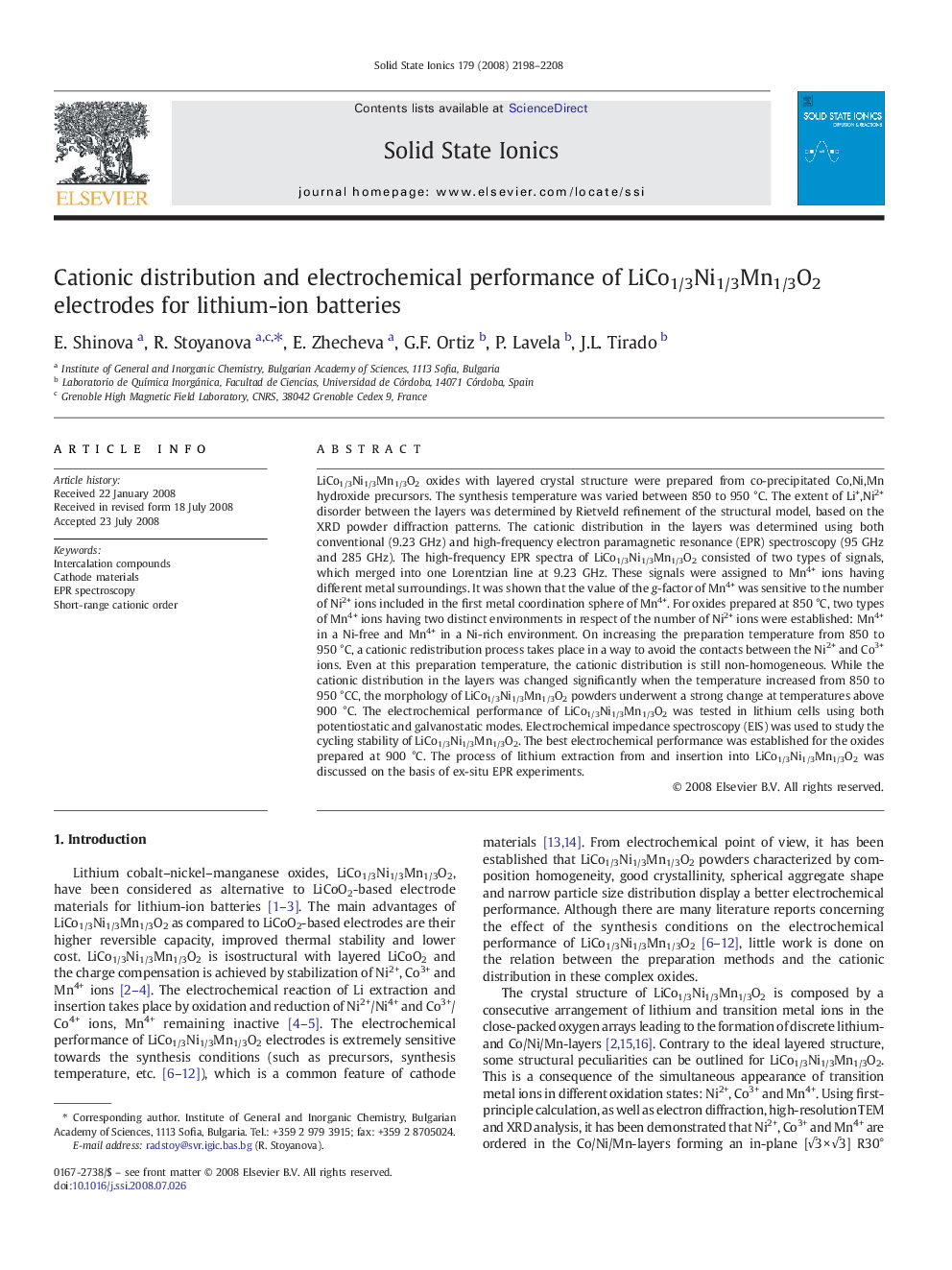| کد مقاله | کد نشریه | سال انتشار | مقاله انگلیسی | نسخه تمام متن |
|---|---|---|---|---|
| 1296868 | 973815 | 2008 | 11 صفحه PDF | دانلود رایگان |

LiCo1/3Ni1/3Mn1/3O2 oxides with layered crystal structure were prepared from co-precipitated Co,Ni,Mn hydroxide precursors. The synthesis temperature was varied between 850 to 950 °C. The extent of Li+,Ni2+ disorder between the layers was determined by Rietveld refinement of the structural model, based on the XRD powder diffraction patterns. The cationic distribution in the layers was determined using both conventional (9.23 GHz) and high-frequency electron paramagnetic resonance (EPR) spectroscopy (95 GHz and 285 GHz). The high-frequency EPR spectra of LiCo1/3Ni1/3Mn1/3O2 consisted of two types of signals, which merged into one Lorentzian line at 9.23 GHz. These signals were assigned to Mn4+ ions having different metal surroundings. It was shown that the value of the g-factor of Mn4+ was sensitive to the number of Ni2+ ions included in the first metal coordination sphere of Mn4+. For oxides prepared at 850 °C, two types of Mn4+ ions having two distinct environments in respect of the number of Ni2+ ions were established: Mn4+ in a Ni-free and Mn4+ in a Ni-rich environment. On increasing the preparation temperature from 850 to 950 °C, a cationic redistribution process takes place in a way to avoid the contacts between the Ni2+ and Co3+ ions. Even at this preparation temperature, the cationic distribution is still non-homogeneous. While the cationic distribution in the layers was changed significantly when the temperature increased from 850 to 950 °CC, the morphology of LiCo1/3Ni1/3Mn1/3O2 powders underwent a strong change at temperatures above 900 °C. The electrochemical performance of LiCo1/3Ni1/3Mn1/3O2 was tested in lithium cells using both potentiostatic and galvanostatic modes. Electrochemical impedance spectroscopy (EIS) was used to study the cycling stability of LiCo1/3Ni1/3Mn1/3O2. The best electrochemical performance was established for the oxides prepared at 900 °C. The process of lithium extraction from and insertion into LiCo1/3Ni1/3Mn1/3O2 was discussed on the basis of ex-situ EPR experiments.
Journal: Solid State Ionics - Volume 179, Issue 38, 30 November 2008, Pages 2198–2208